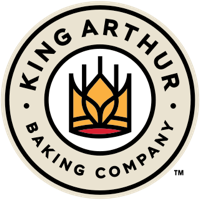Which gluten-free flour should I use?
There are many options to choose from: Here's a guide to picking the right one for cakes, cookies, breads, and more.
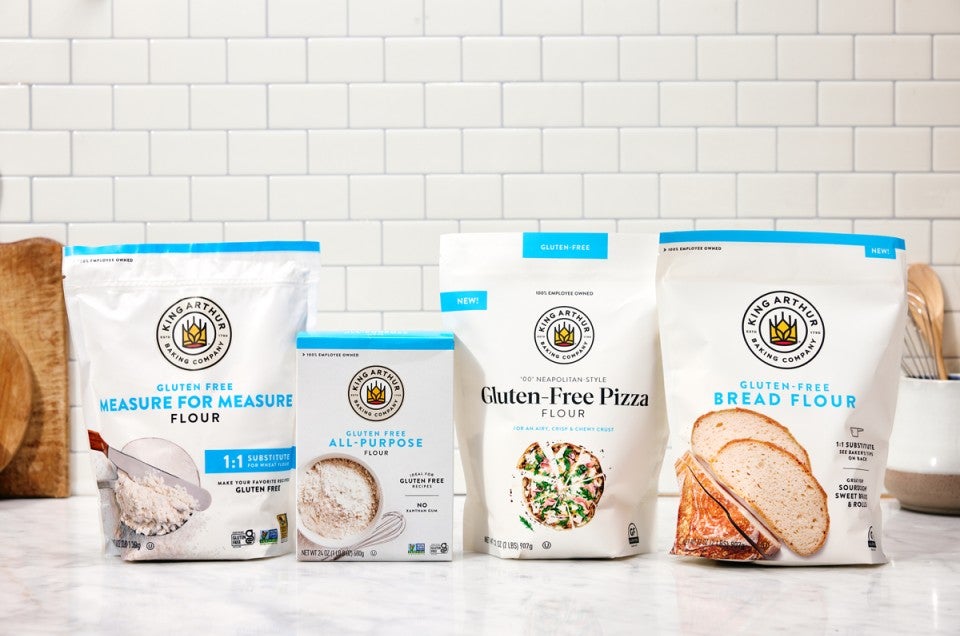

There was a time when gluten-free flour didn’t even exist, and now there are so many options available that it can be hard to know which one to reach for when you’re baking cakes, cookies, or breads.
Our Research & Development team has been developing gluten-free flours and mixes for over a decade, and by now, they’ve developed the perfect flour for every kind of baking. As a result, we recently expanded our gluten-free flour line, adding two more very special options, for a total of four different gluten-free flours. If you’re ready to bake but are wondering which gluten-free flour to use, here’s your guide.
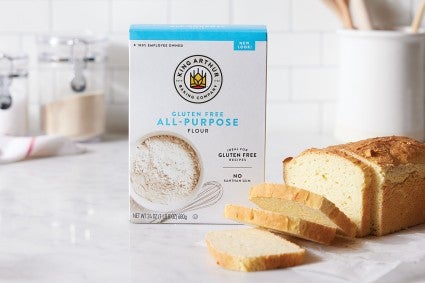
What it is: This gluten-free flour is meant for recipes, including yeasted recipes, that already call for “gluten-free flour” or “gluten-free flour blend” (or similar wording). It has no xanthan gum, which allows bakers to customize the gums used in their gluten-free recipe. A handy tip: If the recipe calls for xanthan gum in its ingredient list, you should typically use gluten-free all-purpose flour. (For more on xanthan gum and its role in gluten-free baking, see our guide to xanthan gum.)
Why it’s great: Made from a blend of white rice flour, whole grain brown rice flours, tapioca starch, and potato starch, this flour yields baked goods with no grittiness or aftertaste.
How to bake with it: Use in any recipe that calls specifically for gluten-free flour. Do not swap it into recipes that call for conventional wheat flour — for that, you’ll want to use our Measure for Measure Flour (read more below).
Find the flour: Gluten-Free All-Purpose Flour
Recipes to make: Gluten-Free Blueberry Muffins; Gluten-Free Sourdough Sandwich Bread; Gluten-Free Chocolate Chip Cookies; Gluten-Free Pie Crust
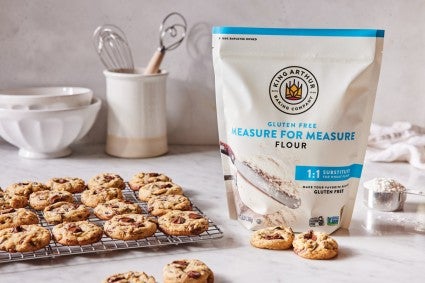
What it is: This flour is a replacement flour, intended as a substitute for all-purpose flour in (non-yeasted) recipes that you want to make gluten-free. Measure for Measure includes xanthan gum, so it can easily be swapped into conventional recipes without any further adjustments needed.
Why it’s great: Measure for Measure can be used in virtually any recipe that doesn’t call for yeast, and bonus, it’s whole grain.
How to bake with it: Swap this flour 1:1 into any recipe that calls for all-purpose flour to make it gluten-free. It’s ideal for non-yeasted recipes like cookies, brownies, and cakes. Do not use it in recipes that specifically call for gluten-free flour — that’s a job for our Gluten-Free All-Purpose Flour (above).
Find the flour: Gluten-Free Measure for Measure Flour
Recipes to make: Gluten-Free Quick and Easy Fudge Brownies; Gluten-Free Simple Chocolate Cake; Gluten-Free Vanilla Pound Cake; Gluten-Free Classic Peanut Butter Cookies
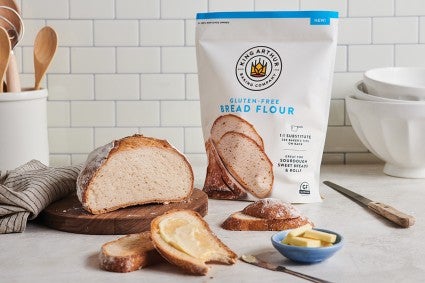
What it is: If you feared that going gluten-free meant you’d never again eat a chewy bagel or tear into a beautiful braided challah, our gluten-free bread flour has come to the rescue. Gluten-free baking with yeast can be trickier than other recipes, due to the unique role that gluten plays in breads and other yeasted baked goods. But Gluten-Free Bread Flour (and Gluten-Free '00' Pizza Flour, below) is specially formulated for gluten-free bread baking. It contains gluten-free wheat starch, which helps mimic the flavor of conventional flours and acts as a thickener. While the starch undergoes rigorous testing to ensure it’s gluten-free, it’s not wheat-free, so if you have a wheat allergy, this flour is not suitable for you. See more information on our product page.
Why it’s great: This flour’s key ingredient, gluten-free wheat starch, results in dough that can easily be shaped (and even braided, like challah).
How to bake with it: Use in any recipe that calls specifically for gluten-free bread flour or substitute for all-purpose or bread flour in your favorite bread recipes — see our product page for baker’s tips.
Find the flour: Gluten-Free Bread Flour
Recipes to make: Gluten-Free Artisan Bread; Soft Gluten-Free Cinnamon Rolls; Gluten-Free Challah; Chewy Gluten-Free Bagels

What it is: This finely-milled gluten-free flour is especially well-suited to pizza making, from Neapolitan-style to thick, chewy pan varieties. Like gluten-free bread flour, it’s made with gluten-free wheat starch, which gives the pizza crusts (as well as focaccia and ciabatta) a chewiness and flavor similar to what you’d get if you used conventional '00' flour. (In short, it’s miraculous.) See the product page for more information.
Why it’s great: This flour yields a crust that avoids any gumminess, develops a crisp bottom with some chew, and achieves good oven spring for an open crumb. What’s more, the dough can easily be shaped like classic artisan pizza styles.
How to bake with it: Use in any recipe that calls specifically for gluten-free pizza flour. We do not recommend substituting for conventional wheat flour in your favorite recipes.
Find the flour: Gluten-Free '00' Pizza Flour
Recipes to make: Gluten-Free Neapolitan-Style Pizza Crust; Gluten-Free Deep Dish Pizza; Gluten-Free Ciabatta Rolls; Garden Gluten-Free Ciabatta
For more gluten-free expertise, see our Gluten-Free Baking Guide.
Cover photo by Danielle Sykes; food styling by Liz Neily.
